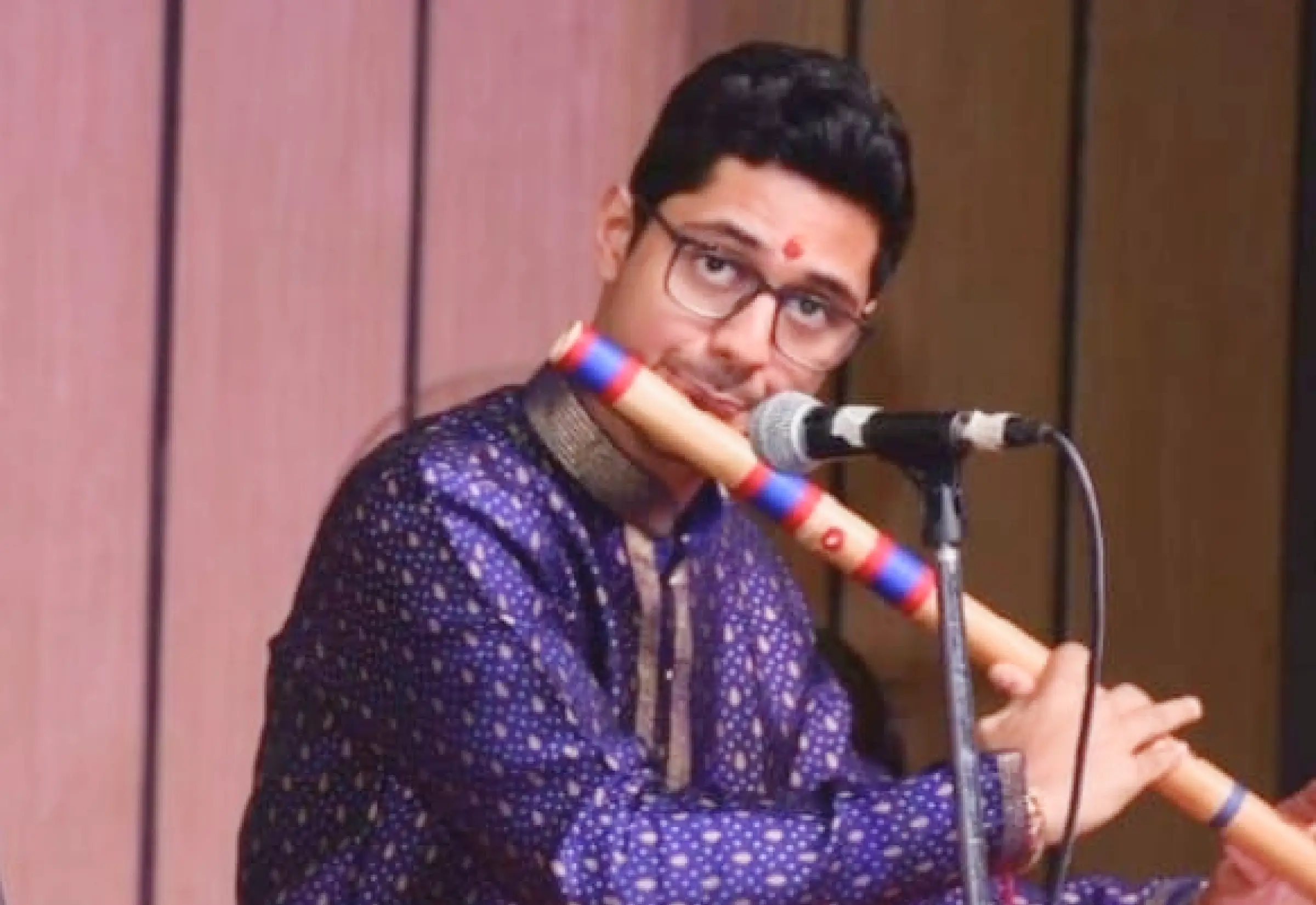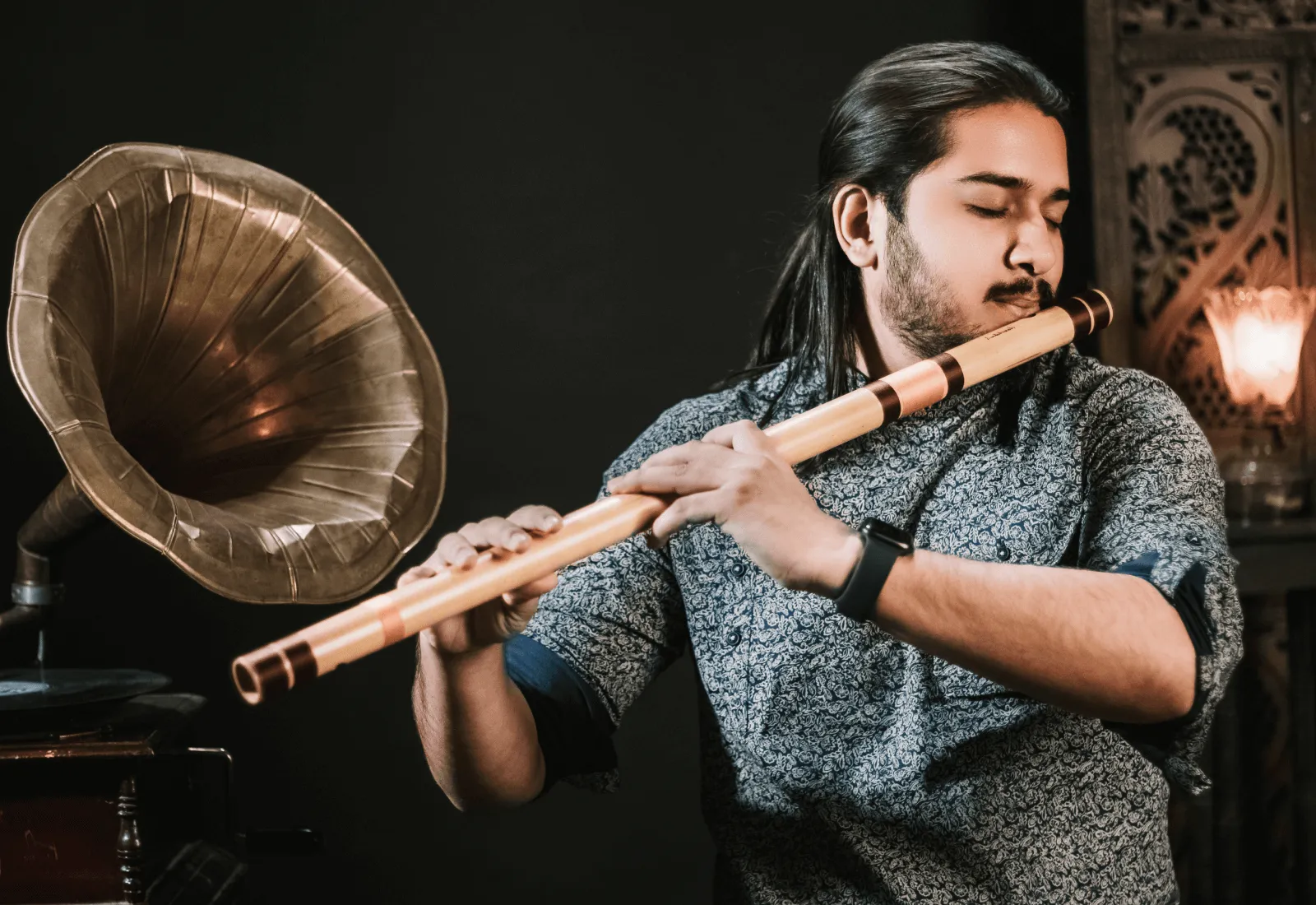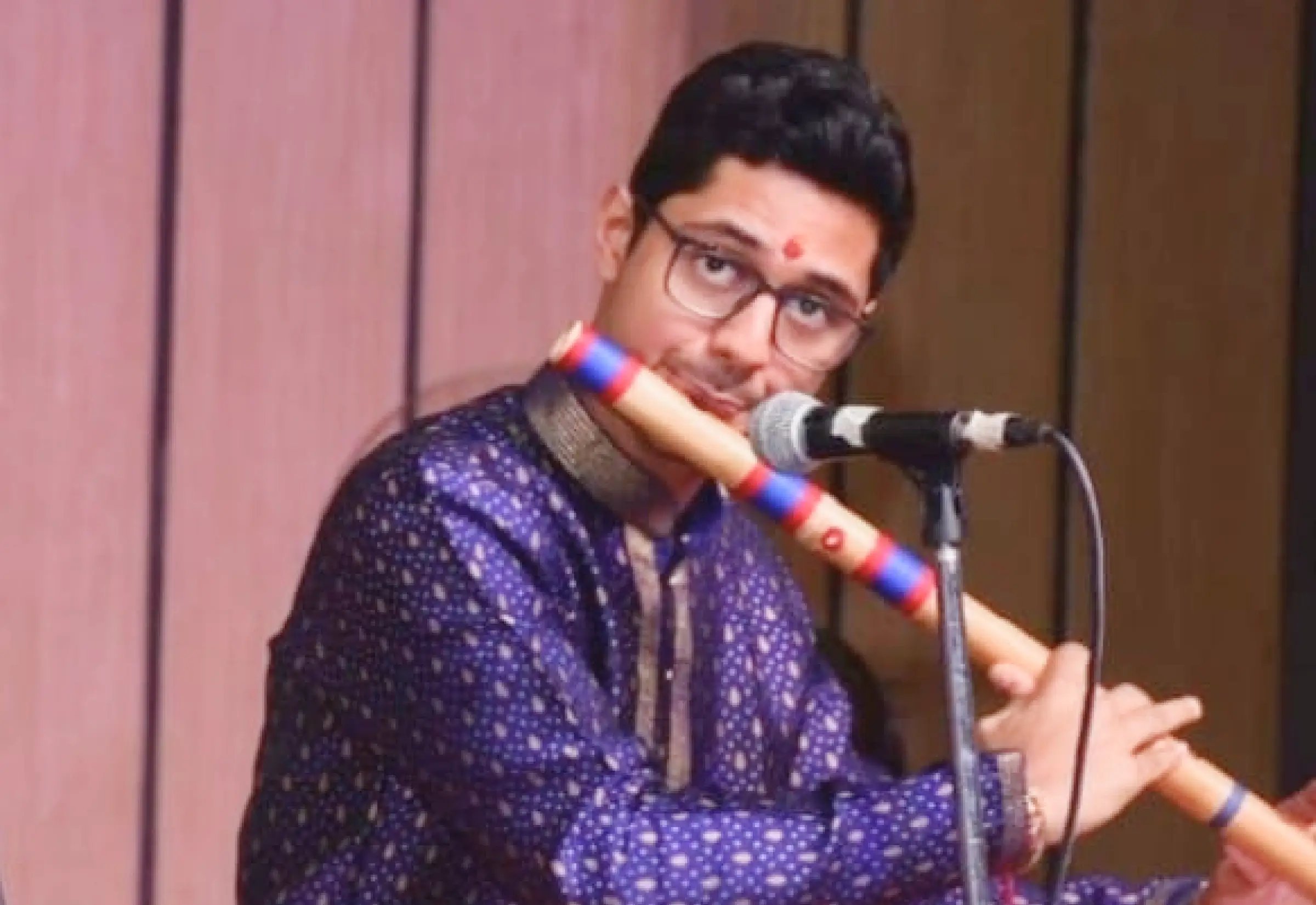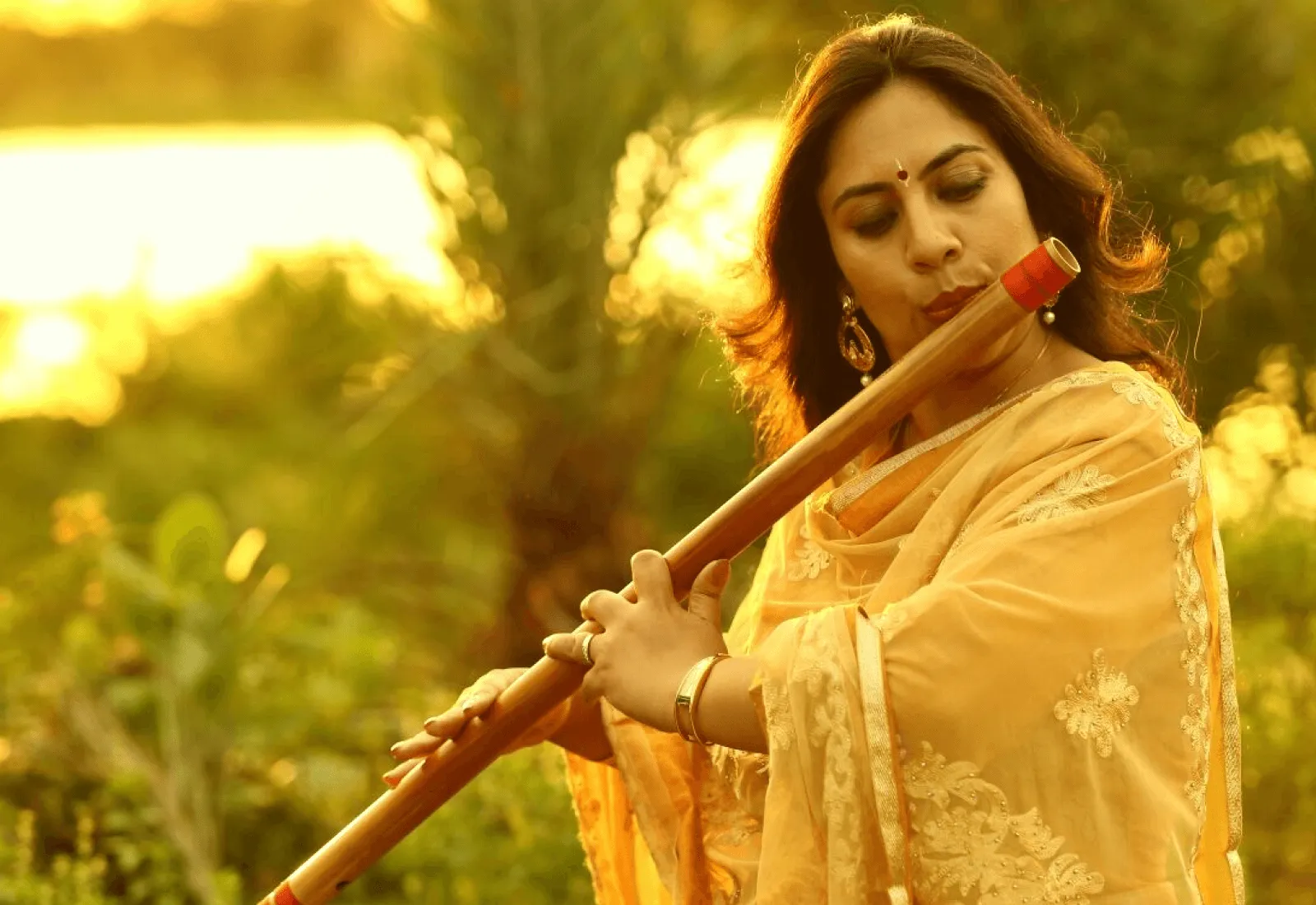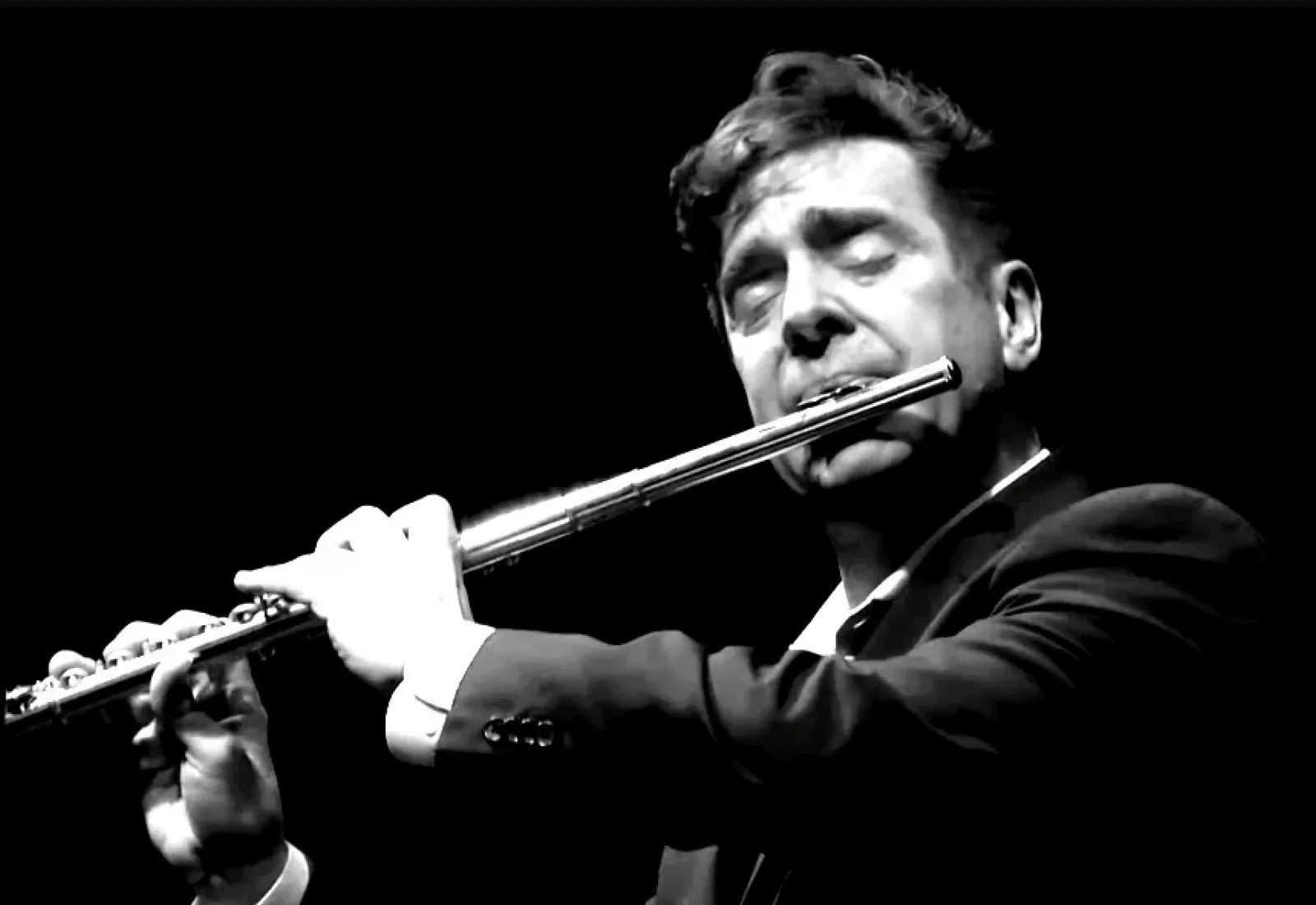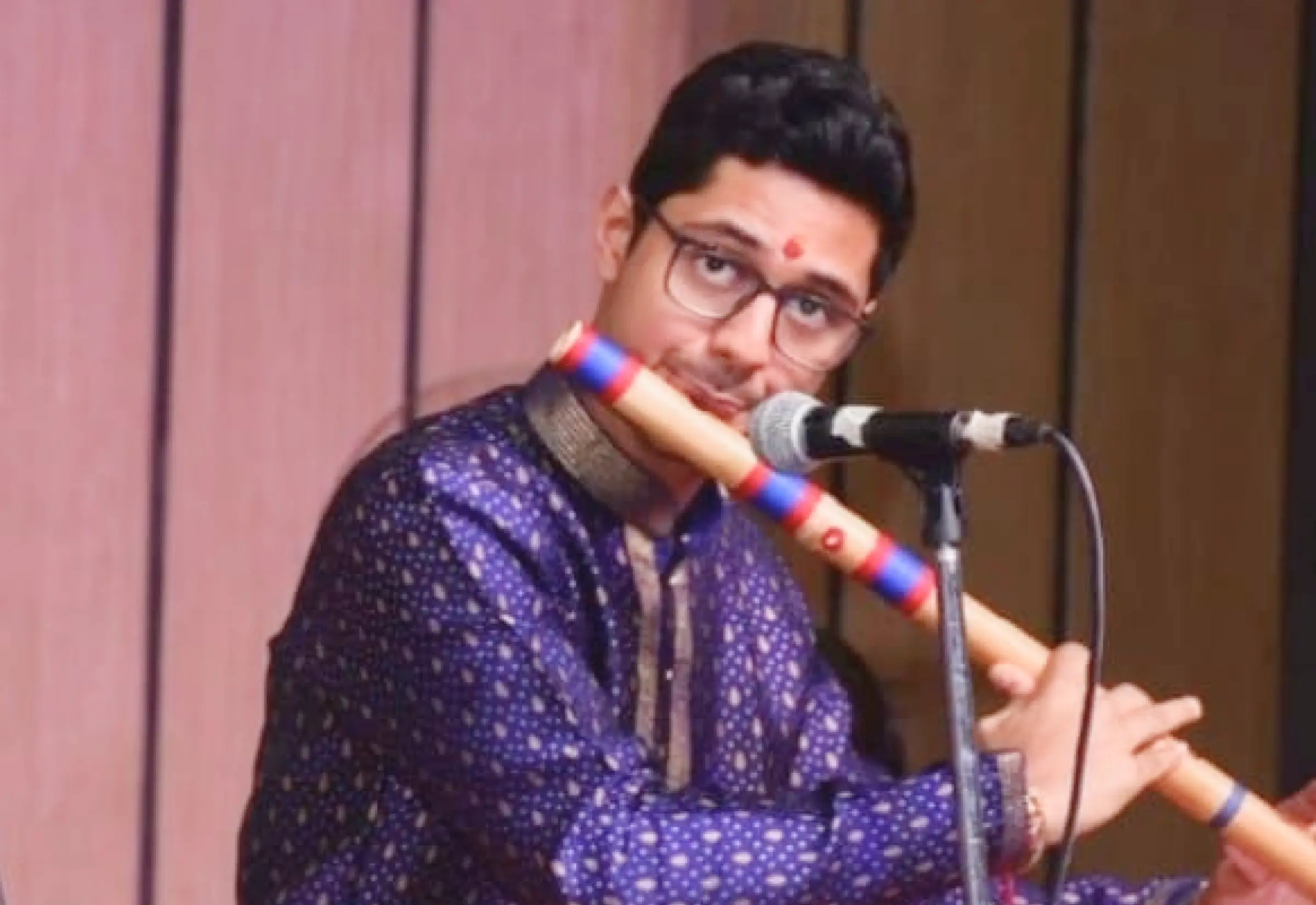Venu Overview
The venu is a transverse flute made entirely of bamboo and one of the oldest instruments of India. Featured prominently in all South Indian musical styles, the venu is also called a Carnatic flute, pullankuzhal, and kolalu. It’s believed that players of this flute should respect and appreciate it, as being able to play venu is considered a gift.
This flute has one open end where the sound comes out and a knotted, closed end at the other. The blow hole is set down from the closed end and followed by eight (sometimes nine) finger holes that are placed closely together. Both ends of the venu flute are bound near the opening and closing with various materials, from twine to decorative tape. This practice prevents the ends of the instrument from splitting or being altered by temperature.
The venu produces notes in a two-and-a-half octave range, a wider range than many instruments are capable of. Each hole produces a unique tone when completely open, partially covered, and completely covered, as well as in various combinations. This gives this simple-looking wooden instrument the ability to play a multitude of ragas.
The venu player typically plays while seated on the floor or on a cushion with their legs crossed, back straight, and head held high. This posture allows the player to take in the most air while maintaining control over the flow of air into the instrument. The flute is held horizontally from the mouth of the player with the open end tilted slightly toward the ground with both hands used to cover the sound holes.
Venu History
The flute is one of the oldest instruments on earth, having originated thousands of years before many modern instruments were developed. Indian flutes have been mentioned for centuries, with the first recorded instance in the Natya Shastra, the Sanskrit text on music and the arts. The venu is named as one of the three original instruments for making music, along with the human voice and the stringed veena. The venu is also the flute most often depicted in images and stories of Lord Krishna.
Although the venu is an ancient Indian instrument, it wasn’t until Sri Sarabha Sastri became an exponent of the flute during the late 19th century that it became accepted on Carnatic concert stages. Sri Sastri experimented with the venu and established his own playing style, which included a highly scientific fingering techniques. His vision of the venu took it from melodic folk flute to influential concert instrument.
Nearly 30 years later, it was Mali (born T. R. Mahalingam) who revolutionized the Carnatic flute design and playing style that we typically see today. Mali introduced a new fingering technique and a new way to hold the instrument, called the parrot clutch, which gave the flutist greater control over the instrument. Mali also popularized continuous flute playing by practicing increased breath control. It is said that he was able to hold a single note for over 40 seconds. Mali’s flute redesign was simple but highly influential. In addition to adding the eight sound hole, the holes were also smaller--producing a warmer tone.
Today, the Carnatic flute is gaining popularity worldwide. No longer only heralded in South India, the instrument’s ability to sound intricate melodies and pronounce slight nuances has made it an attractive addition to many international flutists’ repertoire. The venu can now be heard in folk, jazz, and western popular music.
Venu Playing Techniques
One may learn to play the basics of the venu with practice and discipline. To master the venu however, any flutist must also learn the techniques that allow the ornamental play that brings Carnatic music to life. These nuances are known as gamakas and are traditionally learned from a guru. Other, more general techniques, include:
Overblowing is a technique of raising the frequency of the air column by producing more air than the note requires. This practice forces the note into a higher pitch thus increasing the instruments natural range.
Cross Fingering is a technique used when a flutist closes a finger hole (or holes) below an open hole while playing. This practice will shorten the vibration in the bamboo allowing the player to reach notes between the ones provided by hole placement.
Finger Sliding is the act of the player sliding their fingertips on and off the holes as opposed to abruptly opening or closing them.
Coordinated Breath is the process of taking breaths during times of play that are advantageous to the melody, as opposed to interrupting the tone.
Venu Mechanics
The Carnatic flute, or venu, is made entirely of bamboo with a body construction of one solid piece. The size of the flute determines the key it is played in, or the specific tones it is able to produce. The longer the venu, the deeper the sound, and vice versa. Because there are not movable parts of the flute, the player is unable to affect any change in the pitch besides using breath control.
The venu has one closed end near the blowing hole, with an opening on the opposite end. Between these two ends are eight, sometimes nine, fingering holes. Carnatic flutes have a limited lifespan and require maintenance as follows:
Oral Hygiene: Because bamboo is a porous substance, the flutist must maintain oral hygiene to ensure any bacteria from the player's mouths are not passed onto the bamboo of the instrument.
Clean Hands: The flutist's hands must be dry and clean because moisture will encourage mold and bacterial growth in the wood of the flute.
Temperature: Venu are also vulnerable to cold weather conditions, because cold climate causes wood to contract, and warm air causes it to expand. If a player blows warm air into a cold instrument it could cause the material to crack. It is best not to play the instrument in cold climate. However, if it is necessary, warming the instrument beforehand to room temperature will prevent this damage.
Oiling: There is debate as to whether oiling a venu is required. Best practice is if you play in a dry climate and find your instrument is drying out, oiling will not hurt the instrument.
Cleanliness: It is important to always clean your instrument after each use. This will prevent any moisture from the player's breath to rest in the wood. Cleaning practices should include wiping the blowhole and finger holes with a soft, dry cloth and threading the inside of the instrument to remove internal moisture.
Types of Venu
There are nine venu that are more popular among flutists, including the C pitched flute. However, there are a total of 22 venus available, all with varying lengths. The longer venu provide necessary space between the finger holes so the wind from the player has more room to produce the vibration required for lower tones. While the shorter venu have less space for those vibrations causing the tone to be higher pitched, more exact in their key, and a more intense sound.
Apart from the variations in length, all venus are largely the same with changes only in construction and binding material. Exact designs and specifications vary between makers of the instrument. There is also a Neo style venu, which has a lip plate surrounding the blow hole and some variations of the venu have nine sound holes instead of eight.
Notable Venu Players
Accomplished and talented venu players can be found all over the world and in a variety of genres, but most notably in South Indian Carnatic style. Some of the most popular venu players today are:
- G.S. Rajan
- K. Bhaskaran
- K.S. Gopalakrishnan
- Kudamaloor Janardanan
- Raghavendran Rajasekaran
- Rajkamal N (View His Course)
- Raman Kalyan
- Sampagodu Vighnaraja
- Shashank Subramanyam
- Sikkil Neela
- Sikkil Mala Chandrasekar
- Suchismita Acharya


